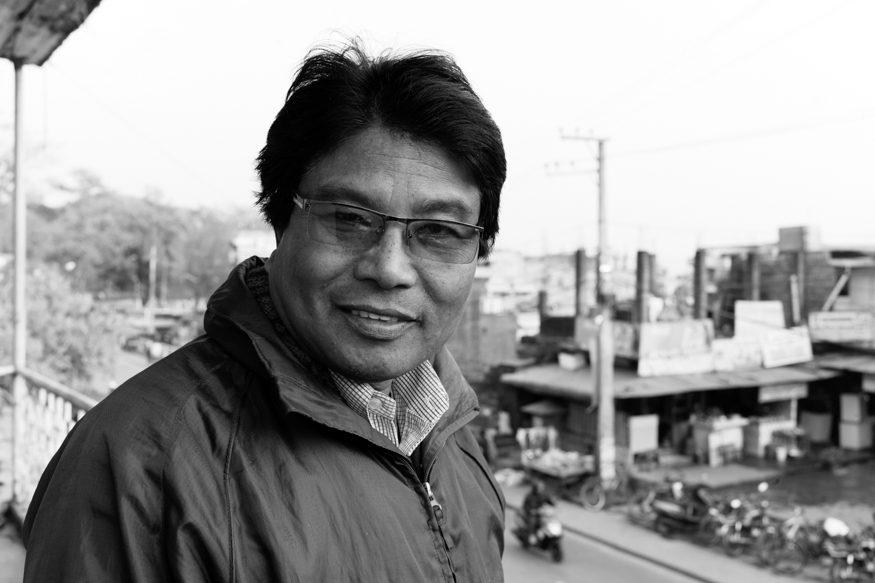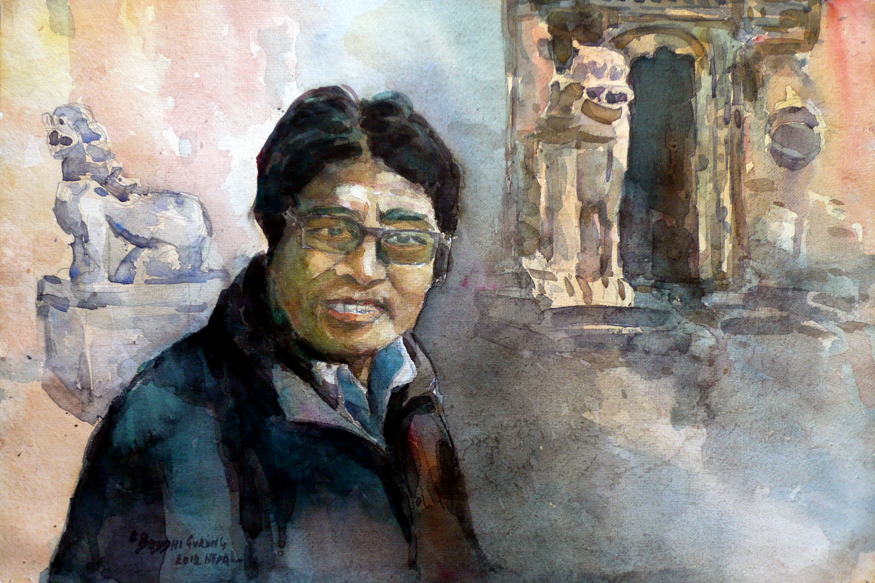

© Antonio Nodar / Buddhi Gurung
Buddhi Gurung is a prominent artist and educator based in Pokhara, Nepal, known for his contributions to the watercolor painting tradition in the region. He is a student of the renowned artist Durga Baral, also known as Vatsyayan, who significantly popularized watercolor painting in Pokhara during the mid-20th century.
Background and Education
Location: Pokhara, Nepal.
Artistic Training: Buddhi Gurung studied under Vatsyayan, gaining insights into the techniques and themes prevalent in watercolor art.
Artistic Focus and Contributions
Watercolor Painting: Gurung specializes in watercolor paintings that depict the natural beauty and daily life of Pokhara Valley. His works often reflect the picturesque landscapes, including mountains and local scenes that are characteristic of the region.
Concern for Originality: While he acknowledges the growing number of watercolor artists, Gurung has expressed concern about the diminishing originality in their work. He emphasizes the importance of preserving traditional themes while adapting to modern influences.
Community Engagement
Creative Artists Group: To foster a vibrant art scene, Gurung is involved with the Creative Artists Group in Pokhara, which aims to promote local art and encourage collaboration among artists.
Advocacy for Local Themes: He advocates for artists to draw inspiration from local nature and society, maintaining a connection to Pokhara's cultural identity while exploring new artistic expressions.
Impact on Nepali Art
Buddhi Gurung's dedication to watercolor painting and his role as an educator contribute significantly to the preservation and evolution of this art form in Nepal. His efforts to encourage originality among emerging artists help ensure that the unique artistic heritage of Pokhara continues to thrive amidst modern influences. Through his work and community involvement, Gurung plays a vital role in shaping the future of Nepali art.